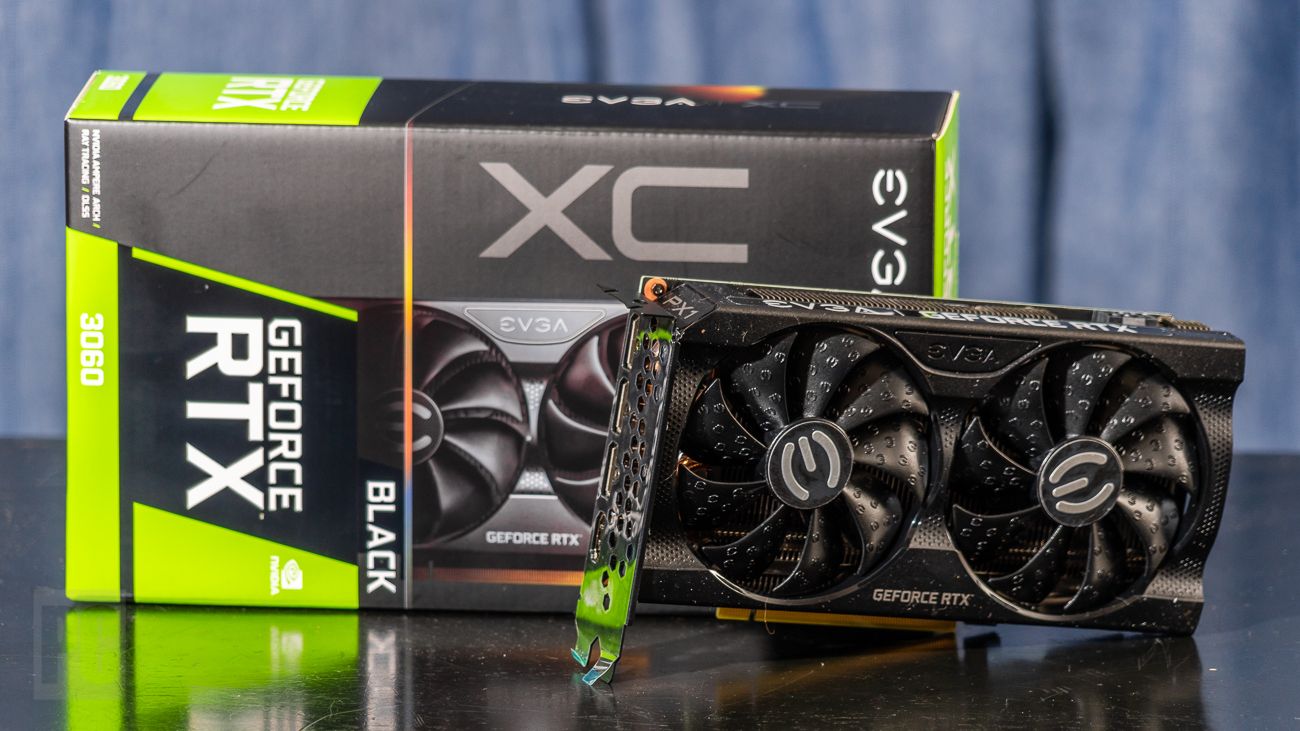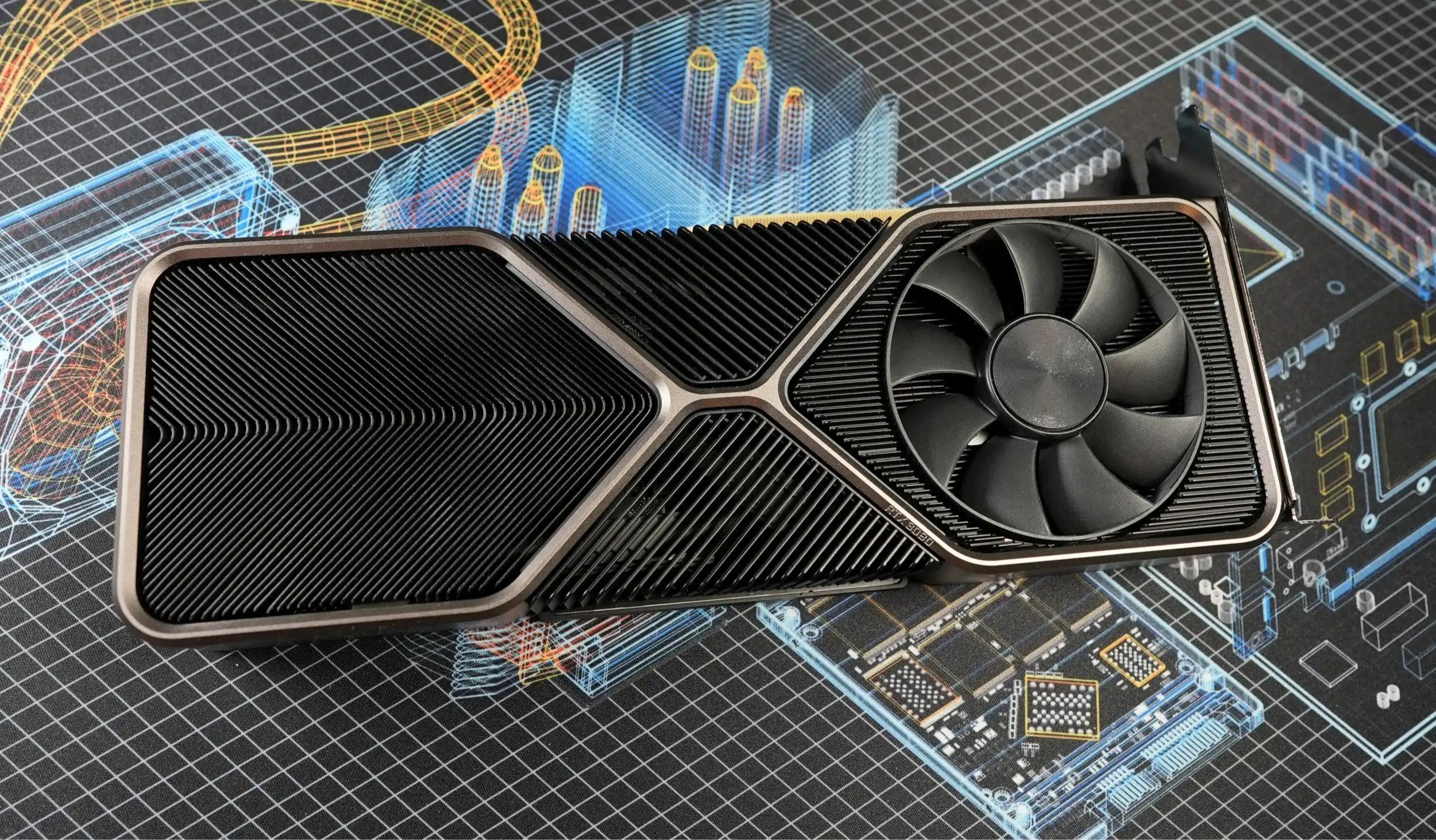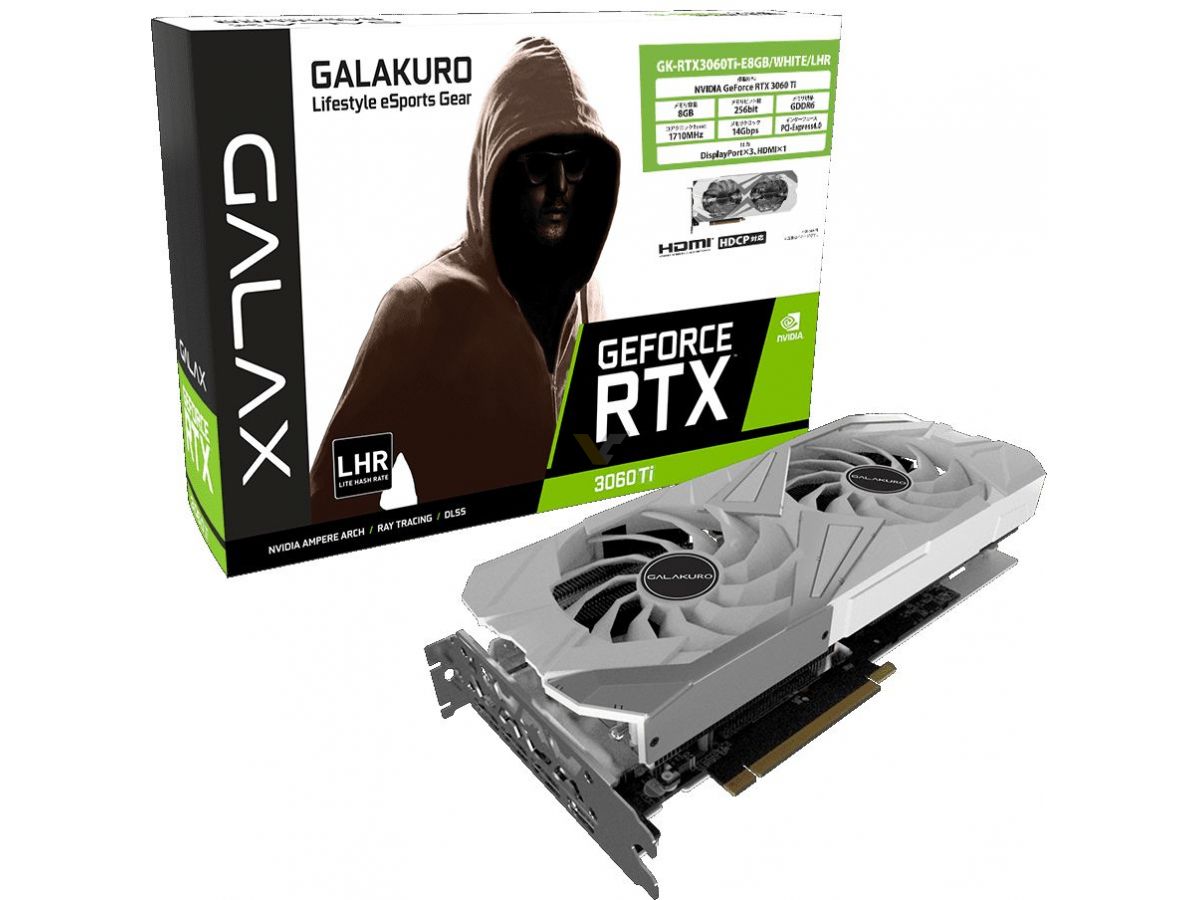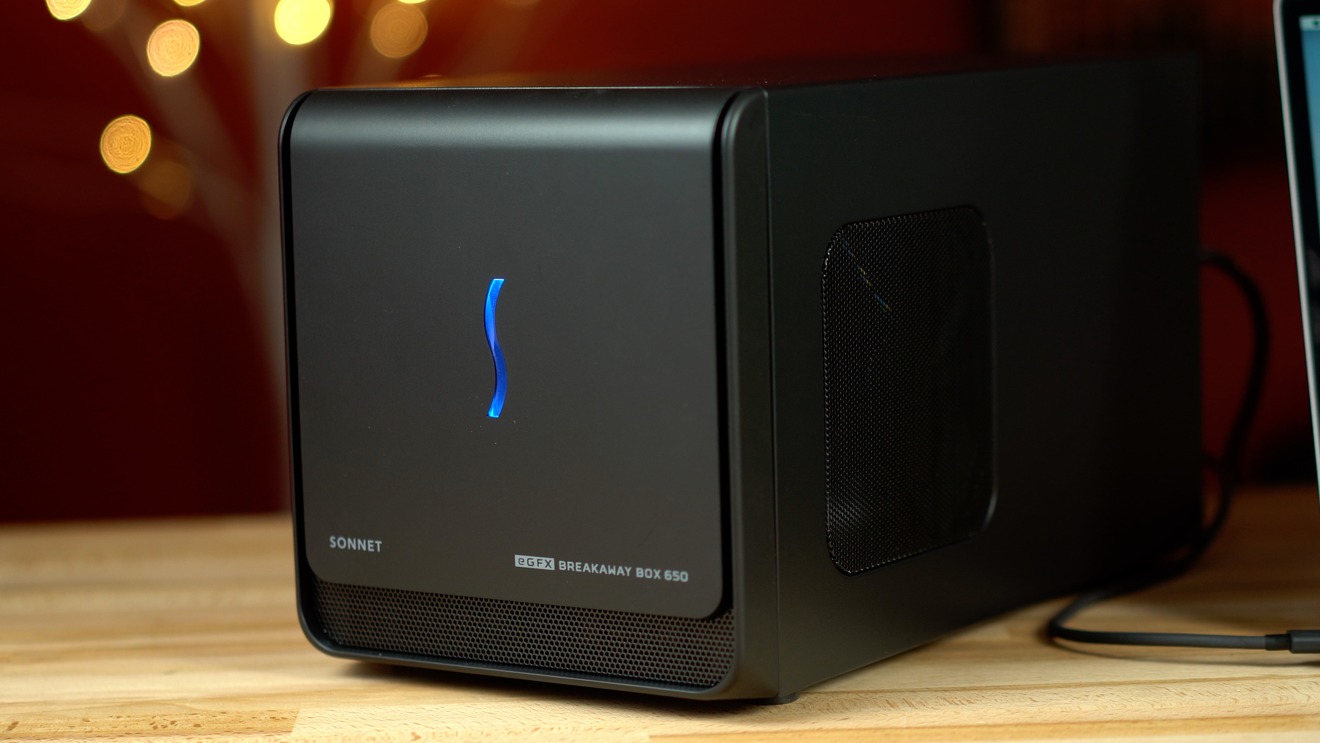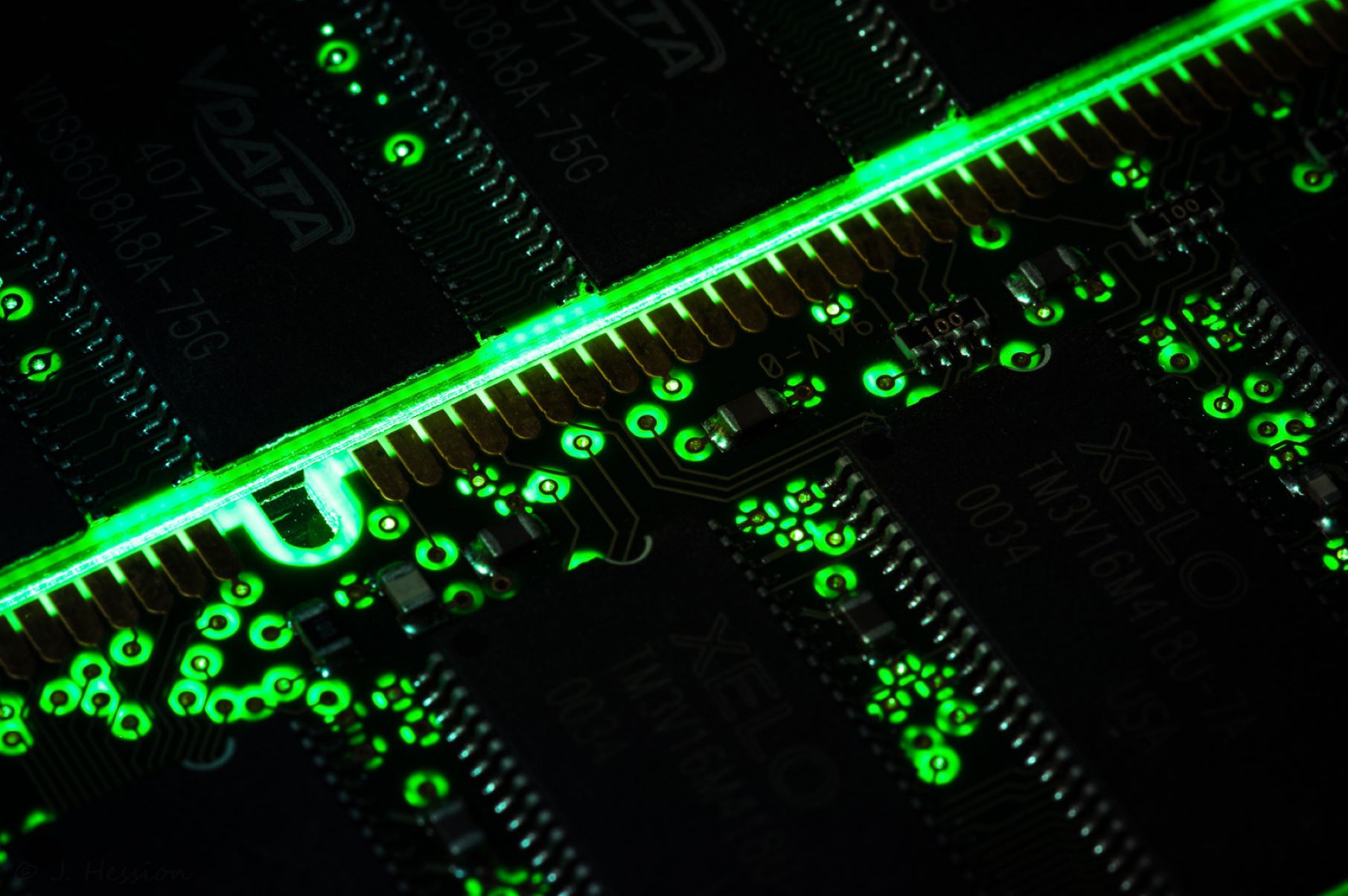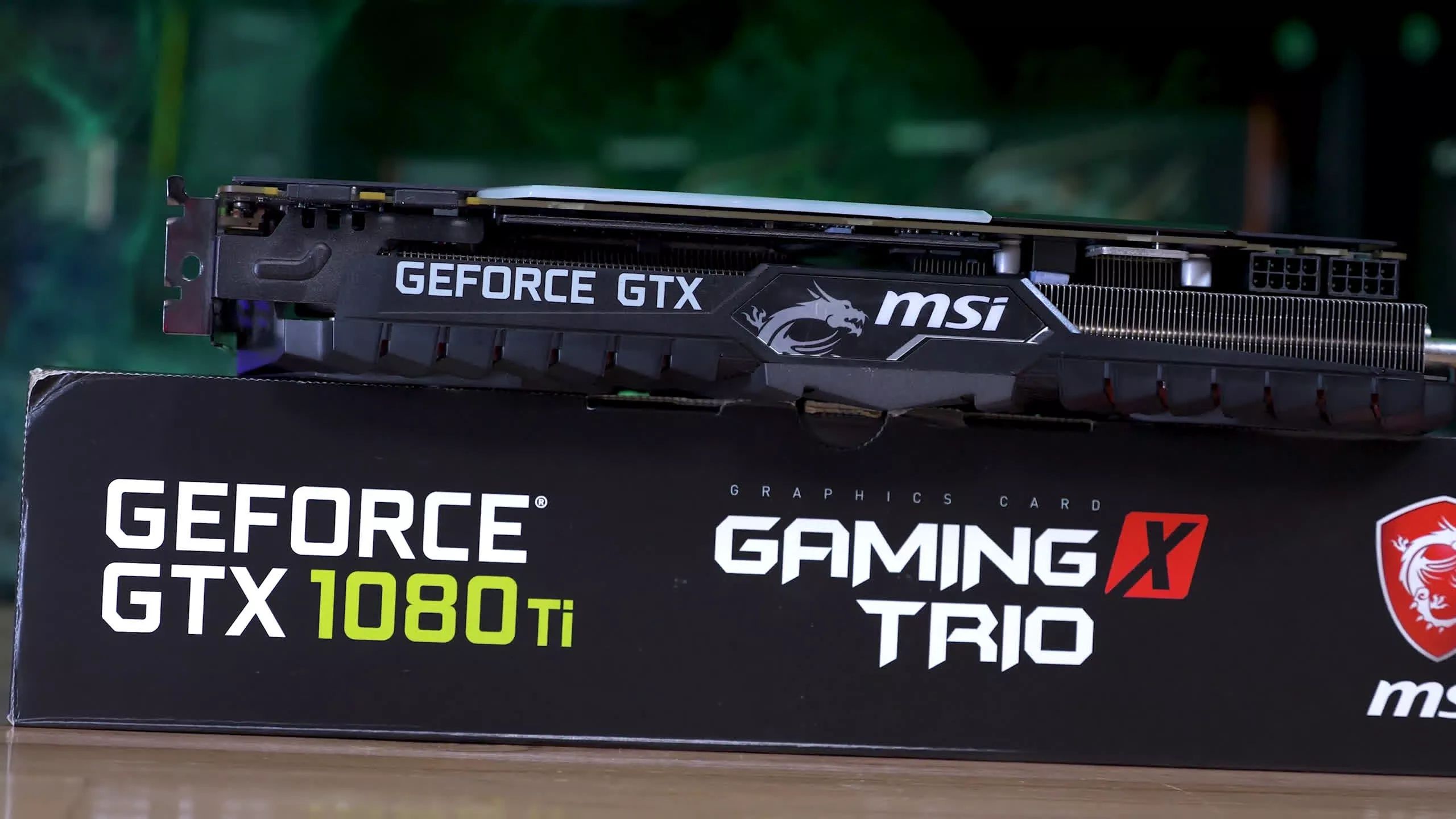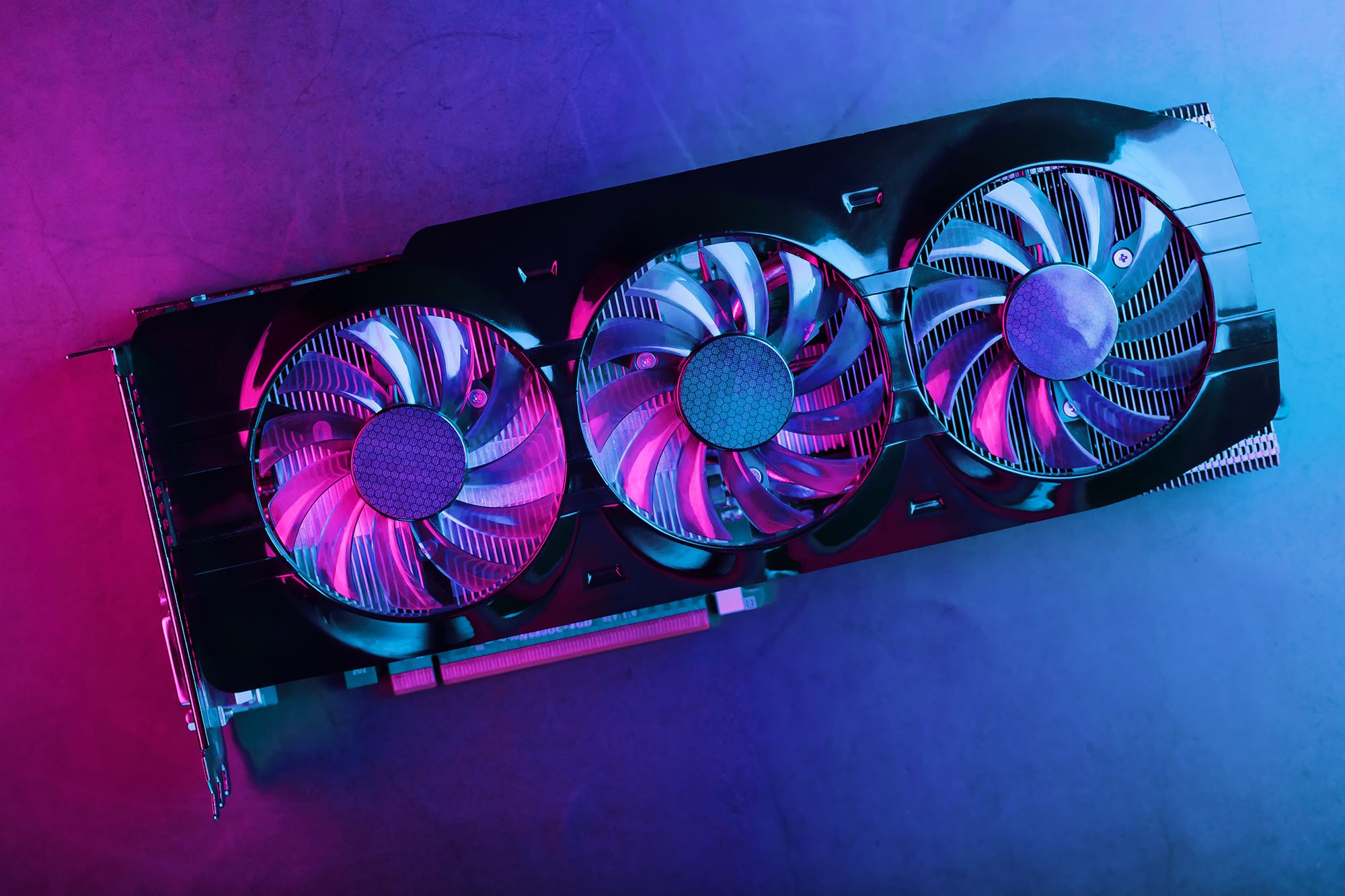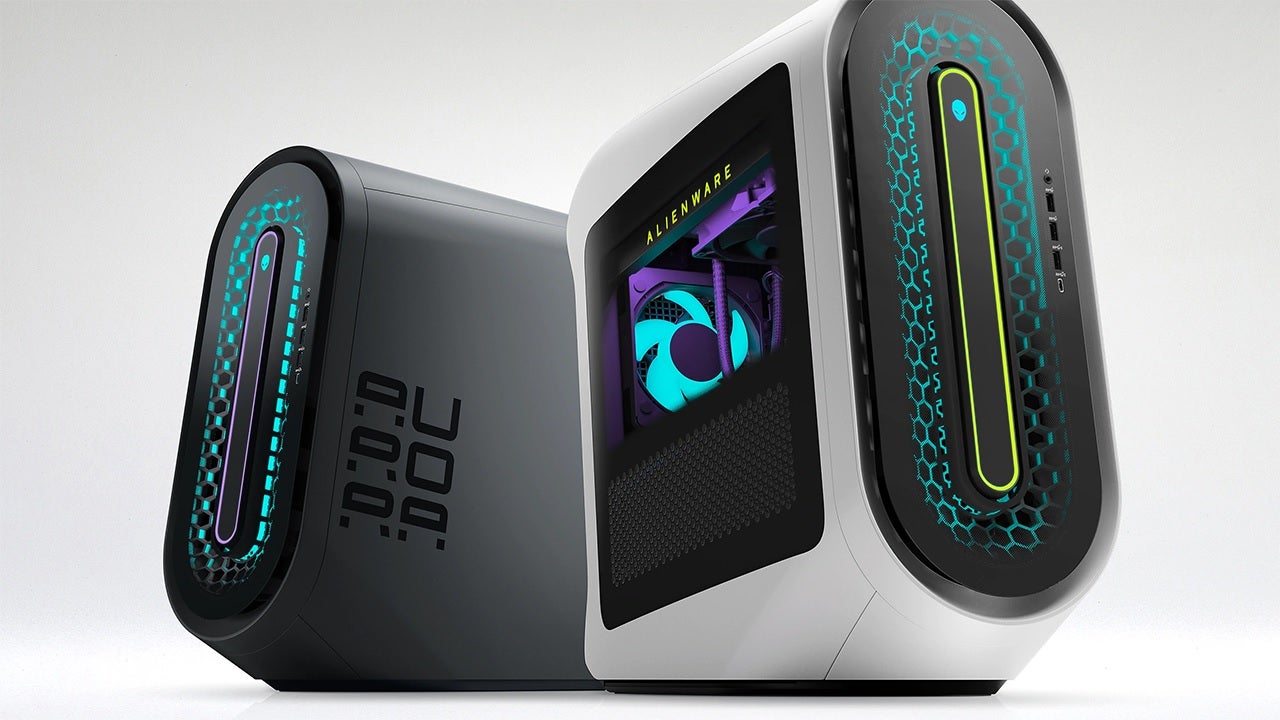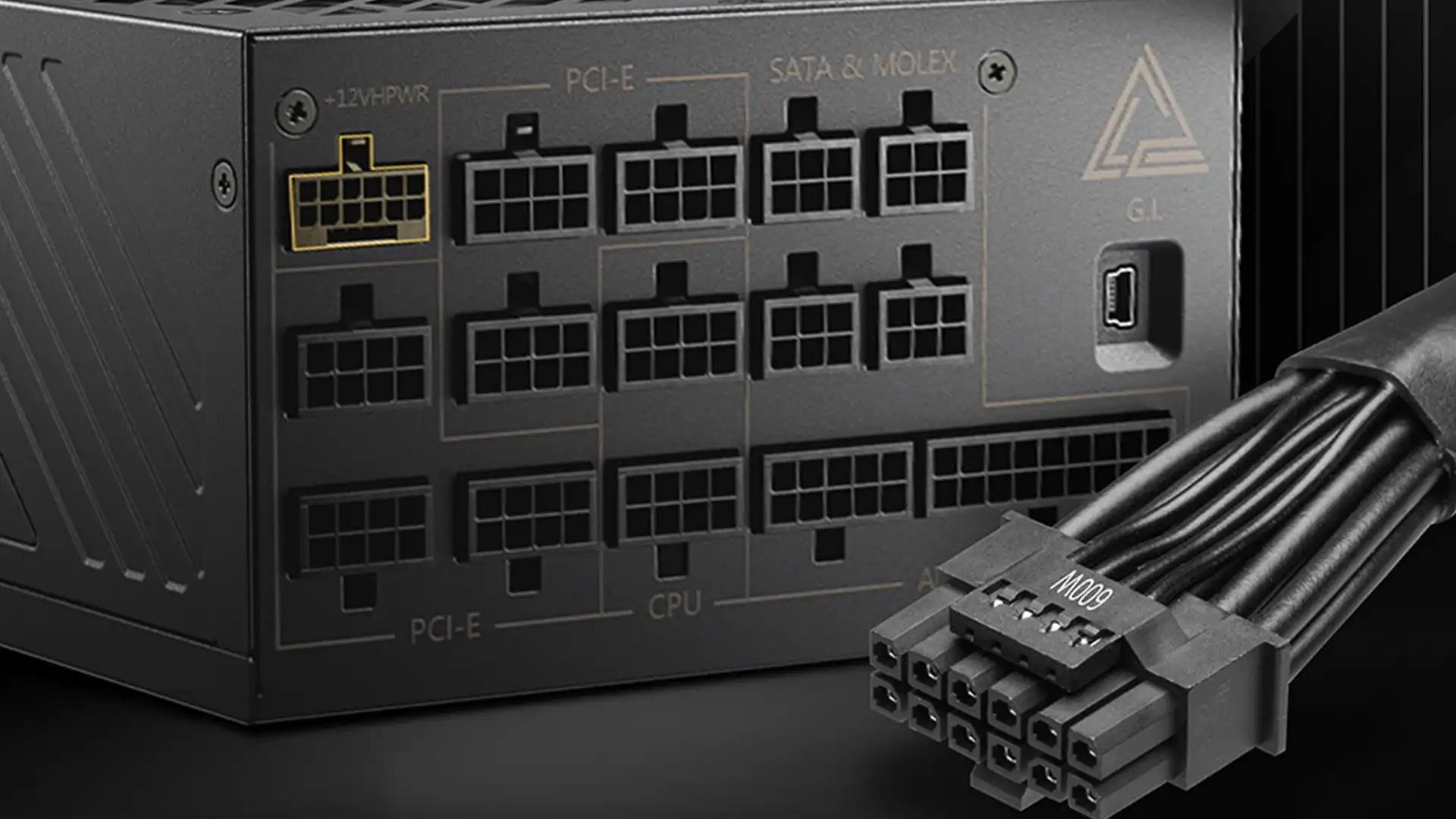Introduction
Welcome to the world of GPUs! Whether you are a gamer, a creative professional, or a data scientist, a good graphics processing unit (GPU) is essential to enhance your computing experience. With the ever-evolving technology, new GPU models are constantly being introduced to the market, each with its own unique features and capabilities. One type of GPU that has gained significant attention recently is the Non LHR GPU.
Non LHR, or Non-Lite Hash Rate, refers to a specific category of GPUs that offer higher mining performance compared to their LHR counterparts. These GPUs are highly sought after by cryptocurrency miners who are looking to maximize their mining efficiency. However, the benefits of Non LHR GPUs extend beyond the cryptocurrency mining community, as they also deliver powerful performance for gaming, content creation, and other computationally demanding tasks.
In this article, we will delve into the world of Non LHR GPUs, exploring their features, advantages, and disadvantages, as well as the key differences between Non LHR and LHR GPUs. Additionally, we will discuss the various applications and recommend some popular Non LHR GPUs that you can consider for your computing needs. So, let’s get started and unravel the fascinating world of Non LHR GPUs!
Definition of Non LHR GPU
A Non LHR GPU, also known as a Non-Lite Hash Rate GPU, refers to a graphics processing unit that does not have its mining capabilities artificially limited. Lite Hash Rate (LHR) GPUs were introduced by some manufacturers to discourage cryptocurrency miners from purchasing them in bulk. These LHR GPUs have a reduced mining efficiency, meaning they generate slower hash rates when used for mining cryptocurrencies like Bitcoin or Ethereum.
On the other hand, Non LHR GPUs do not have this limitation and offer full mining performance, making them highly attractive to cryptocurrency miners. They are equipped with powerful processors, advanced cooling systems, and ample memory, allowing for efficient and uninterrupted mining operations. Non LHR GPUs are capable of generating higher hash rates, which translates into faster mathematical calculations needed for cryptocurrency mining.
It’s important to note that the lack of mining limitations distinguishes Non LHR GPUs from their LHR counterparts, but it doesn’t necessarily mean they lack other features important for gaming, content creation, or other graphics-intensive applications. Non LHR GPUs still retain their high performance and top-notch graphics rendering capabilities, making them versatile and suitable for a wide range of computing tasks beyond cryptocurrency mining.
Non LHR GPUs are often preferred by serious cryptocurrency miners who rely on the mining efficiency and profitability of their operations. They allow miners to maximize their returns by delivering faster hash rates and completing more calculations within a given time frame. Furthermore, Non LHR GPUs are an appealing choice for gamers and professionals involved in activities such as video editing, 3D rendering, and machine learning, as they provide exceptional performance for these demanding applications.
Features of Non LHR GPU
Non LHR GPUs come packed with a plethora of features that make them a compelling choice for both cryptocurrency miners and other graphics-intensive tasks. Here are some notable features of Non LHR GPUs:
- Full Mining Performance: Unlike LHR GPUs, which have their mining capabilities artificially reduced, Non LHR GPUs offer the full mining performance potential. They deliver faster hash rates, allowing miners to maximize their mining efficiency and profitability.
- Powerful Processing: Non LHR GPUs are equipped with powerful processors, delivering exceptional performance for various computing tasks. Whether you’re gaming, video editing, or engaging in machine learning, these GPUs can handle intensive workloads without compromising on speed and efficiency.
- Ample Memory: Non LHR GPUs have ample memory, allowing for smooth multitasking and handling large datasets. This is particularly beneficial for activities like 3D rendering, scientific simulations, and data analysis, where the GPU’s memory plays a crucial role in processing and storing information efficiently.
- Advanced Cooling Systems: Non LHR GPUs often feature advanced cooling systems that help maintain optimal operating temperatures, preventing overheating and ensuring stable performance. These cooling solutions, such as custom-designed fans and heat sinks, allow the GPU to operate at its full potential even during demanding tasks.
- Wide Compatibility: Non LHR GPUs are generally compatible with a wide range of systems and operating systems, making integration smooth and hassle-free. Whether you’re building a custom gaming rig or upgrading your existing system, these GPUs can be a seamless fit into your setup.
- Enhanced Graphics: Non LHR GPUs excel in delivering stunning visuals, with support for high-resolution displays, smooth animations, and realistic graphics. Gamers and creative professionals can enjoy immersive gaming experiences and produce visually captivating content with the help of these GPUs.
These are just a few of the many features that Non LHR GPUs offer. Ultimately, it’s important to choose a GPU that aligns with your specific requirements and the tasks you intend to perform, whether it’s mining cryptocurrencies, gaming, or professional work.
Advantages of Non LHR GPU
Non LHR GPUs offer several advantages that make them a preferred choice for cryptocurrency miners, gamers, and professionals who require high-performance graphics processing. Let’s explore some of the advantages of Non LHR GPUs:
- Higher Mining Efficiency: Non LHR GPUs provide miners with the full mining performance potential, allowing them to achieve faster hash rates and maximize their mining efficiency. This translates into higher profitability for cryptocurrency mining operations.
- Faster Computational Speeds: Due to their unrestricted mining capabilities, Non LHR GPUs deliver faster computational speeds, resulting in quicker processing of complex calculations. This is advantageous for tasks such as data analysis, 3D rendering, and artificial intelligence, where speedy computation is crucial.
- Versatility: Non LHR GPUs are not limited to cryptocurrency mining. They offer versatile performance, making them suitable for gaming, content creation, video editing, and other graphics-intensive applications. Users can enjoy seamless gameplay, produce high-quality visuals, and perform complex tasks without compromising on performance.
- Long-Term Investment: Investing in a Non LHR GPU can be a wise long-term investment. As technology evolves and more cryptocurrencies emerge, having a GPU with unrestricted mining capabilities allows flexibility to switch and mine different cryptocurrencies based on profitability. Additionally, the powerful processing capabilities of Non LHR GPUs future-proof your system for upcoming software and hardware advancements.
- Broad Compatibility: Non LHR GPUs are designed to be compatible with a wide range of systems and operating systems. This ensures that users can seamlessly integrate these GPUs into their existing setups without experiencing any compatibility issues or limitations.
- Improved Gaming Performance: Gamers can benefit from the enhanced performance of Non LHR GPUs. These GPUs deliver smooth frame rates, crisp graphics, and realistic visual effects, allowing gamers to indulge in immersive gaming experiences without lag or visual glitches.
These advantages highlight the value that Non LHR GPUs bring to cryptocurrency miners, gamers, and professionals alike. By providing unrestricted mining performance, versatile computing capabilities, and exceptional graphics processing power, Non LHR GPUs empower users to push the boundaries of their computing experiences.
Disadvantages of Non LHR GPU
While Non LHR GPUs offer numerous advantages, it is important to consider the potential disadvantages associated with these powerful graphics processing units. Here are some key disadvantages of Non LHR GPUs to keep in mind:
- Energy Consumption: Non LHR GPUs are known to consume a significant amount of power, especially during intensive tasks such as cryptocurrency mining or rendering complex graphics. This can lead to higher electricity bills, impacting the operating costs of the system.
- Heat Generation: Due to their powerful processing capabilities, Non LHR GPUs tend to generate a considerable amount of heat. This can result in higher operating temperatures and potentially require additional cooling solutions or ventilation to maintain adequate thermal management.
- Cost: Non LHR GPUs are often more expensive compared to their LHR counterparts. The unrestricted mining performance and enhanced features come at a premium, making these GPUs a costlier investment upfront. It’s important to consider the budgetary implications when deciding on purchasing a Non LHR GPU.
- Unavailability and Scalability: Non LHR GPUs may face availability challenges due to high demand. Cryptocurrency miners often purchase these GPUs in bulk, causing limited supply and potential price inflation. Additionally, building a multi-GPU setup with Non LHR GPUs could be more challenging due to availability constraints.
- Compatibility Issues: Non LHR GPUs might not be fully compatible with older systems or certain software applications that have specific requirements. Users should ensure compatibility with their current setup or consider any necessary upgrades to avoid compatibility issues.
- Potential Decrease in Resale Value: As technology rapidly advances, the resale value of Non LHR GPUs may decrease over time. Miners who heavily utilize their GPUs may find it more challenging to resell them at a high value compared to GPUs with limited mining capabilities.
While these disadvantages should be taken into consideration, they do not necessarily outweigh the advantages offered by Non LHR GPUs. It is essential to analyze your specific needs, budget, and long-term goals to make an informed decision regarding the suitability of a Non LHR GPU for your computing requirements.
Difference between Non LHR and LHR GPUs
Non LHR GPUs and LHR GPUs differ in several key aspects that can influence their performance and usability. Understanding these differences is crucial for users looking to make an informed decision. Here are the primary distinctions between Non LHR and LHR GPUs:
- Mining Efficiency: The most significant difference between Non LHR and LHR GPUs is their mining efficiency. Non LHR GPUs offer unrestricted mining performance, enabling miners to achieve higher hash rates and maximize their mining profitability. LHR GPUs, on the other hand, have their mining capabilities artificially limited, resulting in slower hash rates and reduced mining efficiency.
- Availability: Non LHR GPUs are generally in higher demand among cryptocurrency miners due to their full mining performance potential. This can make them less readily available in the market compared to LHR GPUs, which are intentionally produced to discourage bulk purchases by miners.
- Price: Non LHR GPUs tend to be more expensive than LHR GPUs, mainly due to their unrestricted mining performance and higher overall performance capabilities. The price difference reflects the enhanced features and potential return on investment for miners.
- Power Consumption: Non LHR GPUs typically consume more power compared to LHR GPUs due to their higher computational capabilities. The increased power consumption can result in higher energy costs and require more robust power supply units to sustain optimal performance.
- Resale Value: Over time and with advancing technology, the resale value of Non LHR GPUs may be more affected compared to LHR GPUs. The limited mining capabilities of LHR GPUs make them more attractive for potential buyers who are not primarily interested in cryptocurrency mining.
- Usage Considerations: Non LHR GPUs are suitable for users who prioritize maximum mining performance, such as cryptocurrency miners who rely on quick hash rates and profitability. On the other hand, LHR GPUs are better suited for users who engage in gaming, content creation, and other graphics-intensive tasks, as they offer a balance between performance and power efficiency.
Understanding the differences between Non LHR and LHR GPUs allows users to make an informed decision based on their specific needs and preferences. It is essential to weigh the advantages and disadvantages of each type and consider factors such as usage requirements, budget, and future scalability when choosing the most suitable GPU for your computing needs.
Uses and Applications of Non LHR GPU
Non LHR GPUs offer a wide range of uses and applications beyond just cryptocurrency mining. Their powerful performance and advanced graphics capabilities make them suitable for various tasks. Here are some common uses and applications of Non LHR GPUs:
- Cryptocurrency Mining: Non LHR GPUs are highly sought after by cryptocurrency miners due to their unrestricted mining performance. These GPUs can efficiently mine popular cryptocurrencies like Bitcoin or Ethereum, allowing miners to maximize their mining efficiency and profitability.
- Gaming: Non LHR GPUs deliver exceptional graphics rendering capabilities, enabling gamers to experience immersive and visually stunning gaming experiences. They can handle demanding games, providing high frame rates, smooth animations, and realistic visuals.
- Content Creation: Non LHR GPUs are valuable for professionals involved in content creation tasks such as video editing, graphic design, 3D modeling, and animation. The powerful processing capabilities and ample memory of these GPUs allow for faster rendering and smooth workflow, contributing to the production of high-quality content.
- Data Analysis: Non LHR GPUs are well-suited for data analysis tasks, especially those requiring complex calculations and large dataset processing. The high computational speed enables faster data analysis, machine learning, and scientific simulations, empowering researchers and analysts to derive insights more efficiently.
- Artificial Intelligence (AI): Non LHR GPUs play a vital role in AI applications, including deep learning, neural network training, and AI-driven simulations. These GPUs provide the necessary processing power to handle large and complex AI models, enabling faster training and inference times.
- Video Rendering and Encoding: Non LHR GPUs excel in video rendering and encoding tasks, allowing for fast and efficient processing of high-resolution videos. This is beneficial for video editors, YouTubers, and content creators who require quick processing and encoding of their videos without sacrificing quality.
- Virtual Reality (VR) and Augmented Reality (AR): Non LHR GPUs are essential for delivering immersive experiences in VR and AR applications. The powerful graphics processing capabilities ensure smooth and realistic rendering of virtual environments, enhancing the overall user experience.
These are just a few examples of the many applications for Non LHR GPUs. Their versatility and high-performance capabilities make them indispensable in various fields, ranging from gaming and entertainment to professional work and scientific research.
Recommended Non LHR GPUs
When it comes to choosing a Non LHR GPU, there are several options available in the market. Here are some highly recommended Non LHR GPUs that deliver exceptional performance and are widely regarded for their reliability and value:
- NVIDIA GeForce RTX 3080: The NVIDIA GeForce RTX 3080 is a powerhouse GPU that offers incredible gaming and rendering performance. Equipped with advanced features like real-time ray tracing and AI acceleration, it delivers stunning visuals and smooth gameplay. With its high memory capacity and excellent cooling, it is a top choice for both gamers and professionals.
- AMD Radeon RX 6800 XT: The AMD Radeon RX 6800 XT is another impressive Non LHR GPU that competes with the top-performing GPUs in the market. It boasts exceptional gaming performance, thanks to its advanced RDNA 2 architecture and high clock speeds. It also excels in content creation tasks, making it a versatile choice for creative professionals.
- NVIDIA GeForce RTX 3070: The NVIDIA GeForce RTX 3070 is a more affordable option that still delivers impressive performance. It offers a balance between price and capabilities, making it a popular choice for gamers and content creators on a budget. With its high performance in both gaming and rendering, it provides excellent value for money.
- AMD Radeon RX 6700 XT: For mid-range gaming and content creation needs, the AMD Radeon RX 6700 XT is a solid choice. It offers a good balance of price, performance, and power efficiency. With its RDNA 2 architecture and ample memory capacity, it delivers smooth gaming experiences and efficient rendering capabilities.
- NVIDIA GeForce RTX 3060 Ti: The NVIDIA GeForce RTX 3060 Ti is a popular choice among gamers and content creators looking for a powerful mid-range GPU. It offers impressive performance in gaming and content creation tasks, providing smooth frame rates and excellent visual fidelity. Its competitive price makes it an attractive option for those on a tighter budget.
These are just a few examples of recommended Non LHR GPUs available in the market. It’s important to take into consideration your specific requirements, budget, and compatibility with your system when selecting a GPU. Additionally, staying updated on the latest releases and reviews can help you make an informed decision based on the current market trends and advancements in GPU technology.
Conclusion
Non LHR GPUs have emerged as a powerful and versatile choice for both cryptocurrency miners and users engaged in graphics-intensive tasks. These GPUs provide unrestricted mining performance, enabling miners to achieve higher hash rates and maximize their profitability. Additionally, Non LHR GPUs deliver exceptional performance in gaming, content creation, data analysis, and other computationally demanding applications.
When considering a Non LHR GPU, it’s important to weigh the advantages and disadvantages. Non LHR GPUs offer higher mining efficiency, increased computational speeds, and enhanced graphics capabilities. However, they may consume more power, generate more heat, and be more expensive compared to their LHR counterparts.
The choice between a Non LHR GPU and an LHR GPU depends on your specific needs and usage requirements. If mining cryptocurrencies is your primary goal, a Non LHR GPU can provide the full mining performance potential. On the other hand, if you prioritize gaming, content creation, or other graphics-intensive tasks, an LHR GPU might be a more cost-effective option.
When selecting a Non LHR GPU, recommended options like the NVIDIA GeForce RTX 3080 and AMD Radeon RX 6800 XT are worth considering due to their outstanding performance and reliability. It’s essential to research and stay informed about the latest releases and reviews to make the best choice for your specific requirements and budget.
In conclusion, Non LHR GPUs offer tremendous potential for cryptocurrency miners, gamers, and professionals seeking top-notch graphics processing power. Their unrestricted mining performance, versatility, and high-performance capabilities make them a valuable asset for various computing tasks. By understanding the features, advantages, and differences between Non LHR and LHR GPUs, users can make an informed decision and unlock the full potential of their computing experience.







